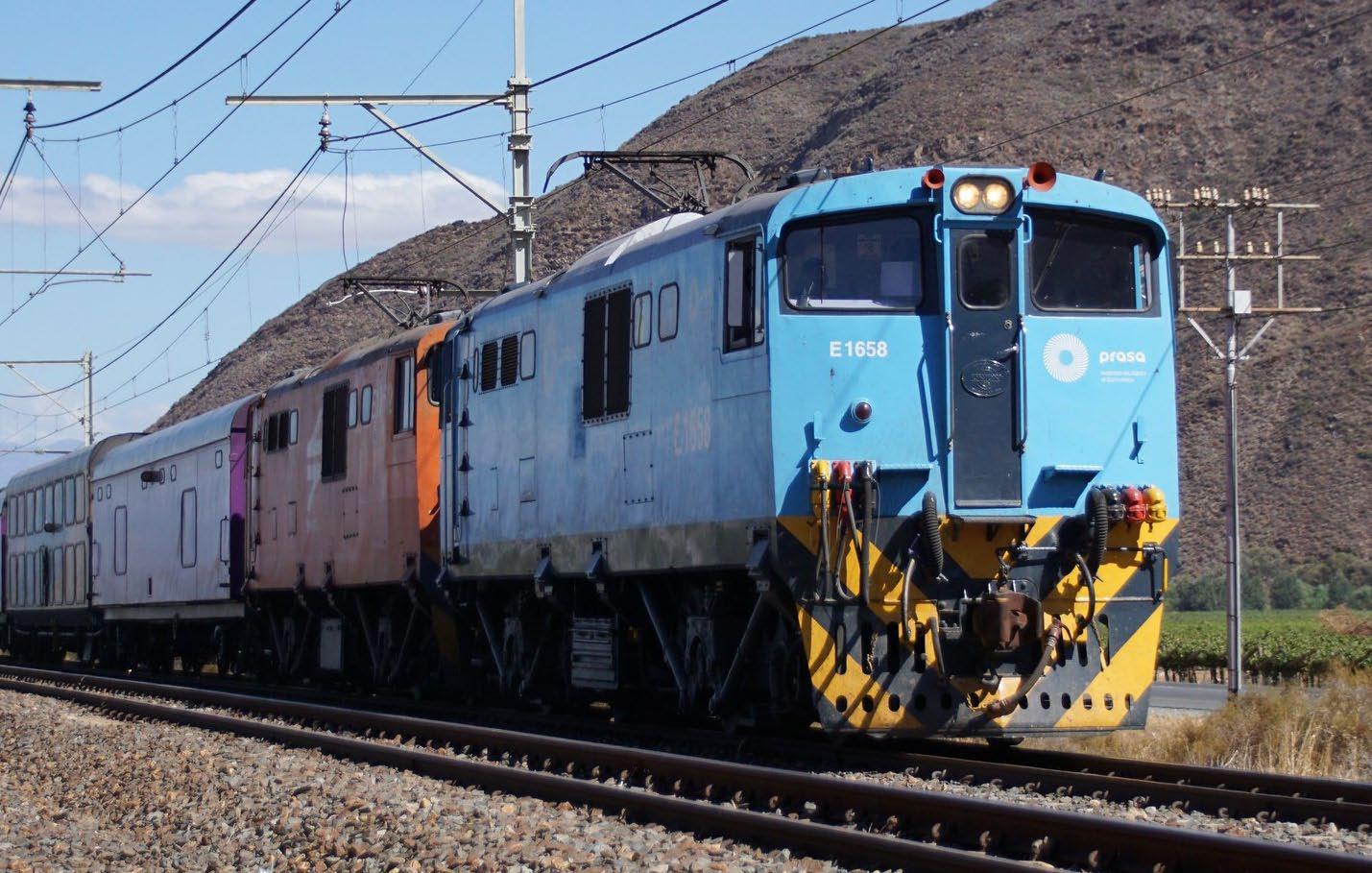
4 minute read
Satellites & Transport
Satellite Signalling: Transforming South Africa's Rail Network
By Jessie Taylor
South Africa’s railway network has long been the backbone of its transportation infrastructure, facilitating the movement of goods and passengers across vast distances. However, the system has faced significant challenges, including outdated signalling equipment, safety concerns, and infrastructure vulnerabilities such as rampant cable theft. To address these challenges, substantial modernisation efforts are underway, with a particular focus on integrating satellite signalling technologies to enhance efficiency, safety, and resilience.
The Urgent Need for Modernisation
Historically, South Africa’s rail signalling systems have been a patchwork of technologies, ranging from mechanical signalling equipment dating back over a century to more recent electromechanical systems.
In addition, South Africa’s railways are vulnerable to the persistent threat of cable theft. According to Transnet, signal cable theft has caused severe disruptions to freight and passenger trains, resulting in economic losses and heightened safety risks.
To address these challenges, Transnet and the Passenger Rail Agency of South Africa (PRASA) are overhauling the outdated infrastructure and introducing advanced technologies to meet contemporary transportation needs. This includes exploring satellite-based signalling as an alternative to physical infrastructure.
Satellite-based signalling solutions offer a resilient alternative to traditional terrestrial systems. Satellite technology reduces dependence on physical infrastructure, ensuring uninterrupted operations, enhancing safety, and improving overall efficiency.
They rely on Global Navigation Satellite Systems (GNSS) to pinpoint train positions accurately. This reduces the need for extensive trackside equipment, which is expensive to install and maintain. In addition, with satellite communications, railway operators can monitor trains in real-time and respond quickly to potential disruptions.
A major factor supporting satellitebased railway signalling in South Africa is the country’s National Communication Satellite Strategy (SatCom). Launched in 2021, SatCom aims to bridge the digital divide and enhance connectivity across the nation. With a projected investment of R 5.2-billion, the initiative includes funding for satellite launches and the development of operational support systems.
One of the primary objectives of SatCom is to improve communication infrastructure for government and public services, which could directly benefit railway operations. By integrating railway signalling with national satellite networks, PRASA and Transnet could ensure more reliable communication systems for train control, even in remote and underserved regions. The initiative presents a compelling business case for satellite signalling in rail, as it aligns with South Africa’s broader strategy to leverage space technology for economic and infrastructural development.
A Global Trend
The transition to satellite-based railway signalling is becoming increasingly popular, globally. Satellite technology has become integral to modern railway systems worldwide, enhancing safety, efficiency, and connectivity. One primary application is in train control and signalling. Traditional trackside signalling equipment is increasingly being supplemented or replaced by satellite-based systems that utilise GNSS, such as GPS or Europe’s Galileo. These systems provide precise train positioning data, enabling more accurate and reliable signalling.
The European Space Agency (ESA) has pioneered satellitebased solutions in railway signalling through projects like 3InSat. This initiative successfully demonstrated the integration of satellite navigation into rail signalling on Italy’s Cagliari-San Gavino line, reducing reliance on physical trackside infrastructure and proved the viability of integrating satellite navigation and telecommunications into rail systems.
Trials conducted in Sardinia showcased how satellite-based solutions can operate without traditional trackside equipment, instead relying on GNSS for train positioning. This approach reduces infrastructure costs and enhances operational flexibility, particularly for remote railway lines.
In the United States, Positive Train Control (PTC) systems have been enhanced through satellite communications. PTC employs satellite data to monitor train locations and speeds, preventing collisions and derailments by automatically controlling train movements when necessary. This integration ensures continuous communication and control, even in remote areas lacking terrestrial communication infrastructure.
Beyond safety, satellites also improve passenger experience and operational efficiency. For example, ScotRail in the United Kingdom has partnered with Starlink to provide highspeed internet access on trains traversing the Scottish Highlands. This initiative addresses longstanding connectivity challenges in remote regions, enhancing both passenger satisfaction and realtime operational monitoring.
Similar technological advancements could be implemented in South Africa, particularly for longdistance freight corridors and rural passenger routes where traditional signalling infrastructure is costly to maintain. By incorporating satellite-based solutions, South Africa could reduce its reliance on physical trackside infrastructure, mitigating risks related to theft and vandalism while significantly improving operational efficiency.
The railway sector remains a vital component of South Africa’s economy, facilitating trade, industry, and daily commutes. However, without significant modernisation, the sector risks falling behind in efficiency, reliability, and competitiveness. Satellite-based railway signalling represents a forward-thinking solution that addresses longstanding issues while positioning South Africa as a leader in transport innovation on the continent.
Source: Global Railway Review | Dailly Maverick | Space in Africa | ESA | Iridium | The Times










